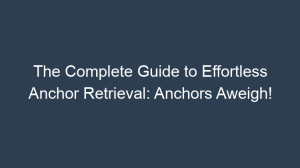Credit cards are double-edged swords: they offer convenience and rewards, but forgetting to pay your balance in full each month can lead to costly interest charges. Tackling credit card debt can be a daunting task, so avoiding interest altogether is the best strategy. This comprehensive guide explores the most effective ways to sidestep credit card interest and take control of your finances.
Pay Off Your Balance in Full Each Month: The most straightforward way to avoid interest is to pay off your credit card balance in full each month. This eliminates any interest charges that would otherwise accrue on unpaid balances. If you can swing it, set up automatic payments to ensure you never miss a due date. This simple discipline can save you a significant amount of money in the long run.
Choose a Credit Card with a Low Interest Rate: Not all credit cards are created equal. Some come with sky-high interest rates, while others offer competitive rates. When selecting a credit card, prioritize one with a low interest rate. This way, even if you carry a balance from month to month, the interest charges will be minimal.
Prioritize High-Interest Debts:
1. Identify Your Debts:
Make a list of all your debts, including credit card balances, student loans, and personal loans. Prioritize them based on their interest rates, with the highest interest debt at the top.
2. Allocate Extra Funds:
If you have extra money each month, put it towards paying off your high-interest debts first. This will minimize the amount of interest you pay and help you get out of debt faster.
3. Consider a Balance Transfer:
If you have good credit, consider a balance transfer credit card with a 0% introductory APR. This allows you to transfer your high-interest debt to the new card and pay it off at a much lower rate.
Opt for Balance Transfer Credit Cards:
1. Understanding Balance Transfers:
Balance transfer credit cards allow you to transfer your existing credit card debt to the new card, often at a lower interest rate. This can save you money on interest charges and help you pay off your debt faster.
2. Choosing the Right Card:
Look for balance transfer credit cards with low APRs and no balance transfer fees. Some cards offer 0% introductory APRs, which can be especially beneficial.
3. Transferring Your Debt:
To transfer your debt, contact the new credit card issuer and request a balance transfer. They will provide you with instructions on how to initiate the transfer.
Make Extra Payments Whenever Possible:
1. The Snowball Method:
If you have multiple debts, consider using the snowball method to pay them off. Start by paying off the smallest debt first, regardless of the interest rate. This can boost your motivation and help you gain momentum as you tackle your larger debts.
2. The Avalanche Method:
Alternatively, you can use the avalanche method, which involves paying off the debt with the highest interest rate first. This can save you more money in the long run, but it may be more challenging to stay motivated.
3. Utilize Windfalls:
Whenever you receive a windfall, such as a tax refund or bonus, consider putting it towards your credit card debt. This extra payment can make a significant dent in your balance and help you get out of debt faster.
Avoid Cash Advances and Overdraft Protection:
1. Costly Cash Advances:
Cash advances from credit cards come with high fees and interest rates. Avoid using them unless absolutely necessary.
2. Overdraft Protection Fees:
Overdraft protection linked to your credit card can also incur fees. Consider alternative overdraft protection options, such as a line of credit or savings account.
Consider a Debt Consolidation Loan:
1. Debt Consolidation Basics:
A debt consolidation loan involves taking out a new loan to pay off all your existing debts. This can simplify your repayment process and potentially lower your interest rate.
2. Qualifying for a Loan:
To qualify for a debt consolidation loan, you typically need good credit and a steady income. Lenders will assess your creditworthiness before approving the loan.
3. Managing Your Loan:
Once you receive the loan, make sure to make regular payments on time. This will help you pay off your debt faster and improve your credit score.
FAQs:
1. What is the easiest way to avoid credit card interest?
The easiest way to avoid credit card interest is to pay off your balance in full each month.
2. How can I choose the right credit card for avoiding interest?
Look for a credit card with a low interest rate and consider getting a balance transfer credit card with a 0% introductory APR.
3. What should I do if I have multiple debts with different interest rates?
Consider the snowball or avalanche method to pay off your debts. Alternatively, you can get a debt consolidation loan to simplify your repayment process.
4. What are some additional tips for avoiding credit card interest?
Make extra payments whenever possible, avoid cash advances and overdraft protection, and consolidate your debts if it makes financial sense.
5. What are the consequences of not paying off my credit card balance in full?
Not paying off your credit card balance in full each month can lead to costly interest charges, late fees, and damage to your credit score.
Conclusion:
Avoiding credit card interest is crucial for maintaining financial stability and achieving long-term financial goals. By following the strategies outlined in this article, you can effectively minimize interest charges, pay off your debts faster, and take control of your finances. Remember, the key to success is discipline, responsible spending, and making timely payments. By adopting these strategies, you can break free from the cycle of credit card debt and pave the way for a financially secure future.







